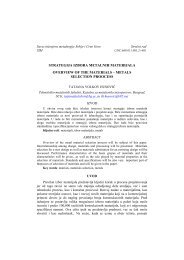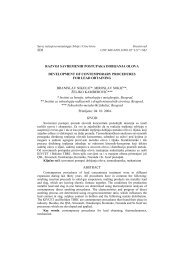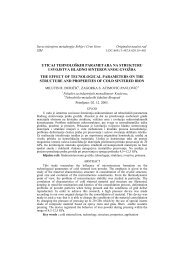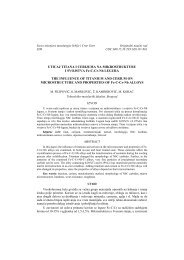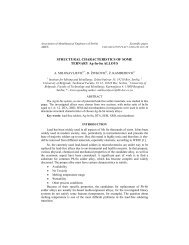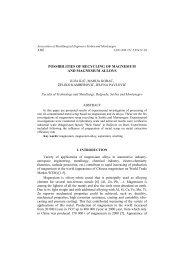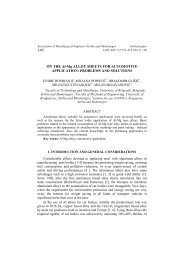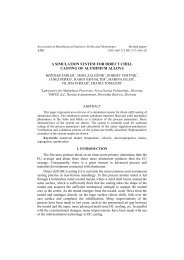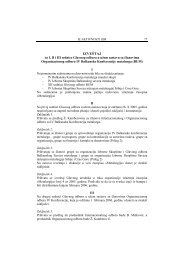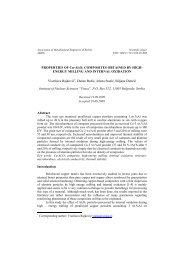THE INHIBITIVE EFFECT OF ETHANOLAMINE ON CORROSION ...
THE INHIBITIVE EFFECT OF ETHANOLAMINE ON CORROSION ...
THE INHIBITIVE EFFECT OF ETHANOLAMINE ON CORROSION ...
You also want an ePaper? Increase the reach of your titles
YUMPU automatically turns print PDFs into web optimized ePapers that Google loves.
Jevremović et al. - The Inhibitive Effect of Ethanolamine on Corrosion... 247<br />
As it can be seen in Table 1 an increase in MEA concentration increases the<br />
charge-transfer resistance, R ct values up to 5 mM of ethanolamine due to inhibitor<br />
adsorption and then decreases at higher concentrations. The R ct decreases, indicating an<br />
increase in the corrosion rate, probably due to desorption of inhibitor. The decrease in<br />
double-layer capacitance with increase in MEA concentration up to 5 mM can result<br />
from a decrease in local dielectric constant due to the formation of a protective layer on<br />
the electrode surface. The thickness of this protective layer increases with increase in<br />
inhibitor concentration up to 5 mM, resulting in a decrease in double layer-capacitance.<br />
While further increase in inhibitor concentration is followed by double layercapacitance<br />
decrease, probably due to the desorption of inhibitor. These results suggest<br />
that MEA molecules function by adsorption at the metal/solution interface.<br />
The values of the inhibition efficiency calculated from impedance measurements<br />
for aluminium at different concentrations of ethanolamine in 3 wt. % NaCl saturated<br />
with CO 2 are shown in Fig. 5. It has been observed that inhibition efficiency increased<br />
with increase in inhibitor concentration and reached a maximum inhibition efficiency of<br />
73 % at a concentration of 5 mM of ethanolamine. The reduction in the dissolution of<br />
aluminuim in the presence of tested inhibitor was attributed to the amino group in the<br />
inhibitor molecule. This group is electroactive and interacts with the metal surface to a<br />
greater extend. Inhibition efficiency then decreases with further increase in inhibitor<br />
concentration.<br />
Fig. 5. Dependence of inhibition efficiency, IE, obtained from EIS measurements, on<br />
ethanolamine concentrations for aluminium in 3 wt. % NaCl saturated with CO 2 .




